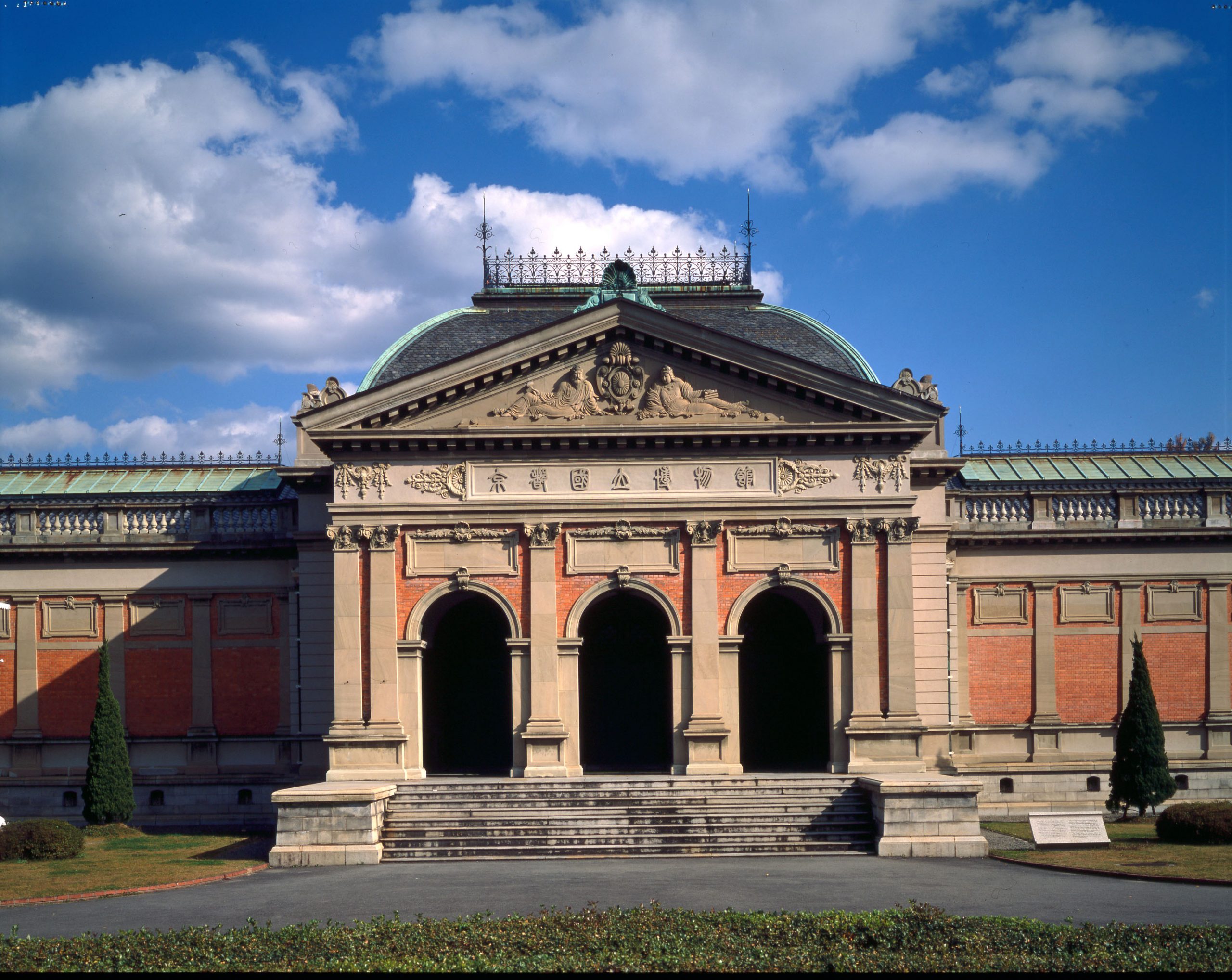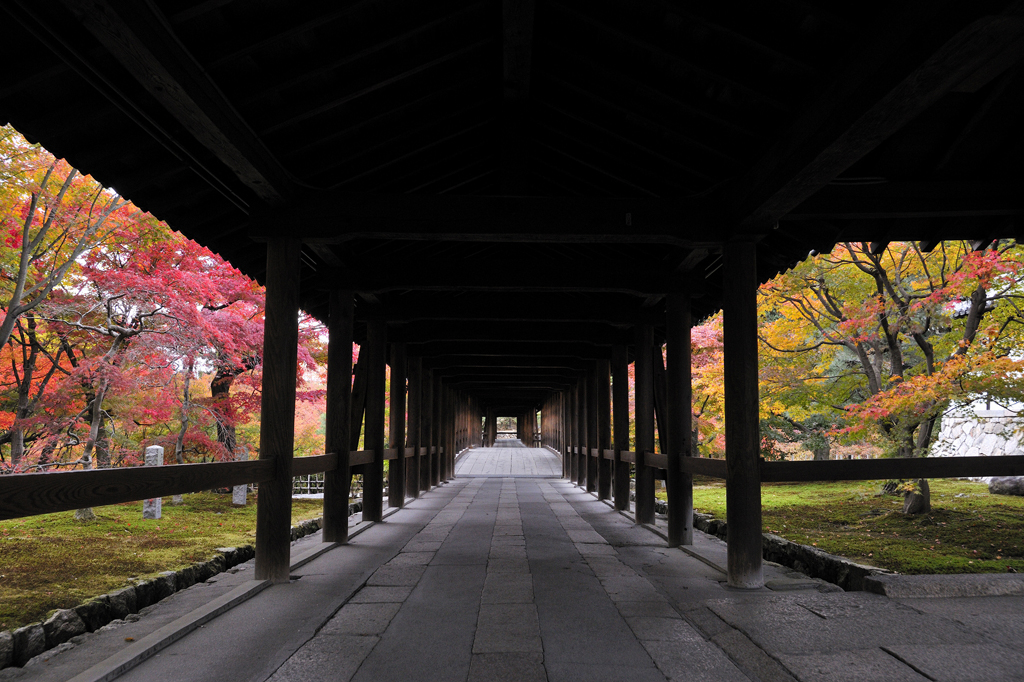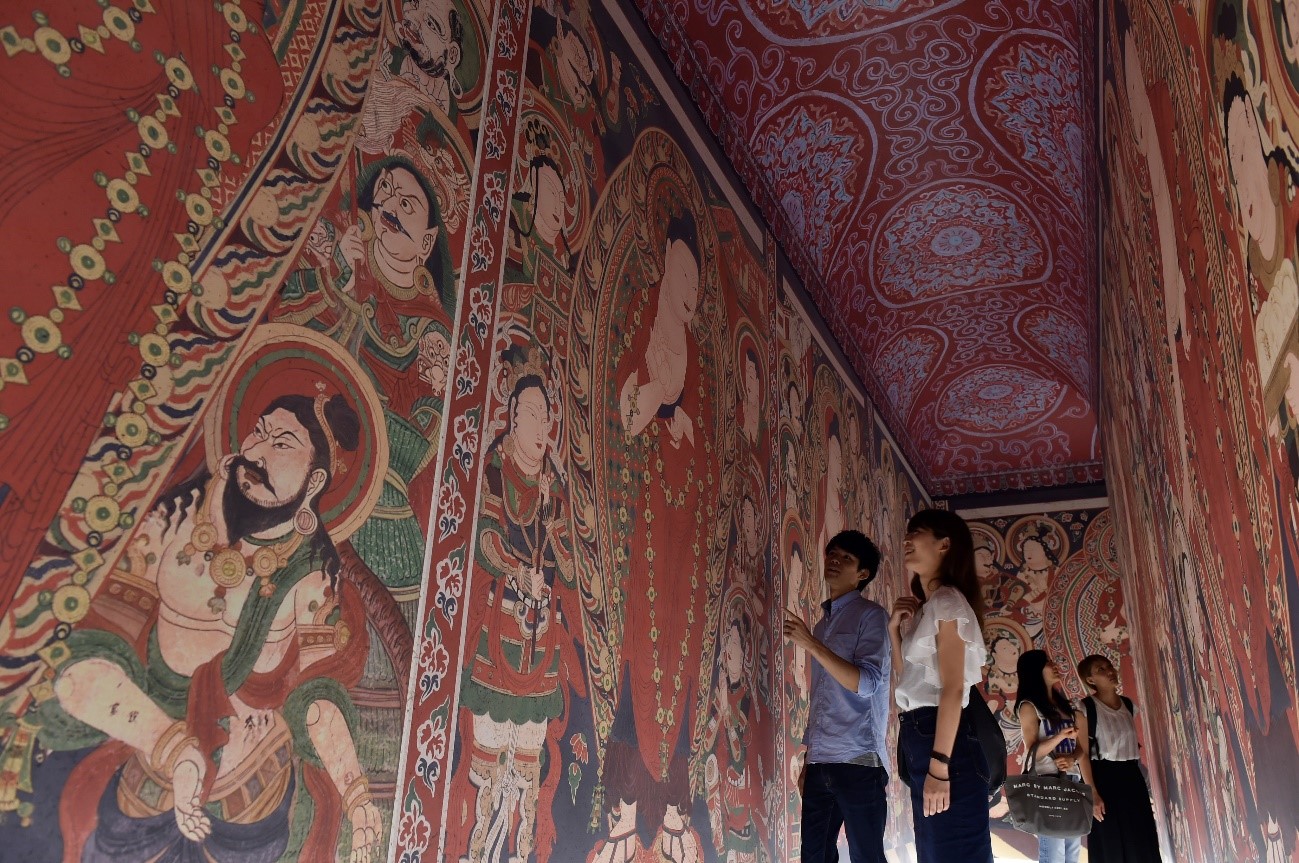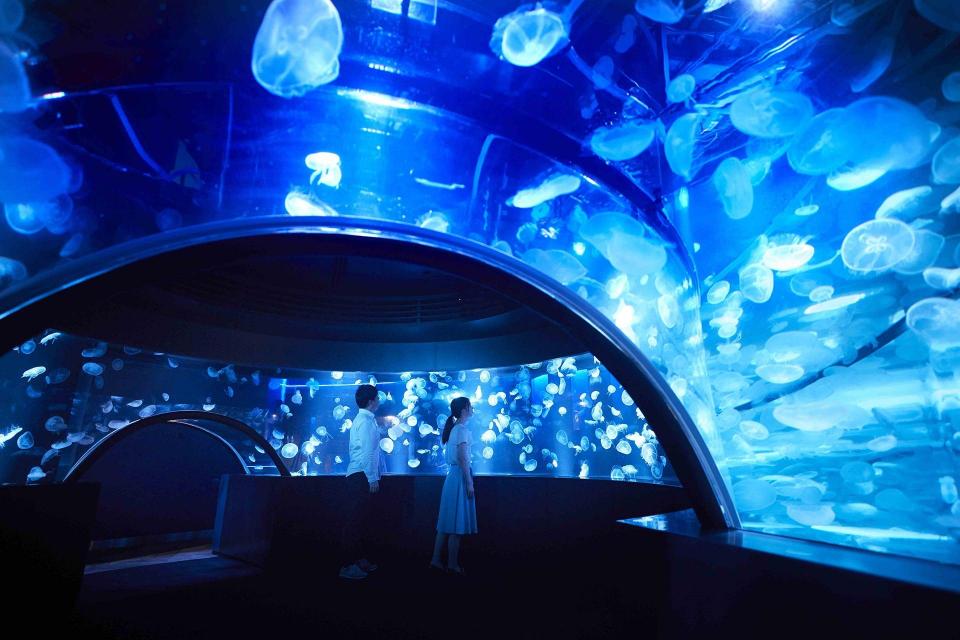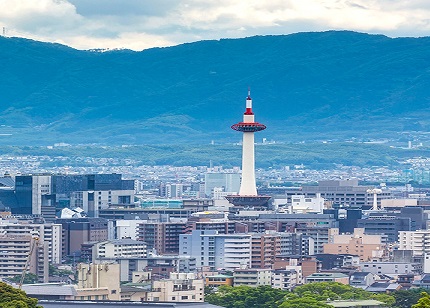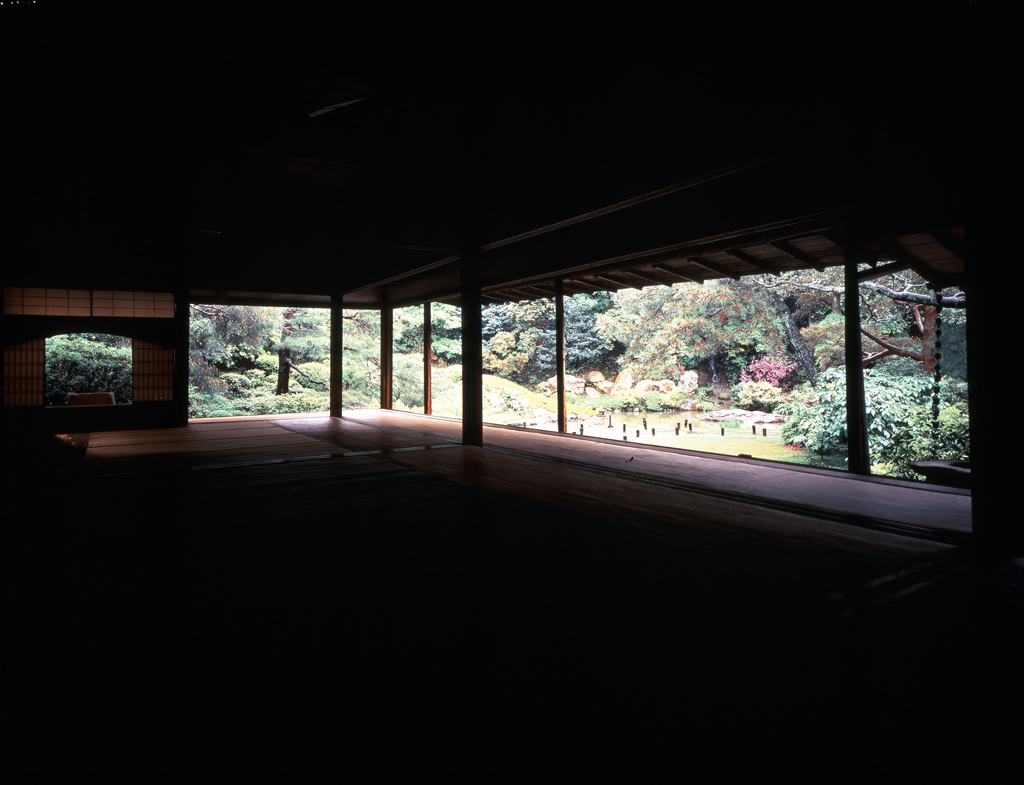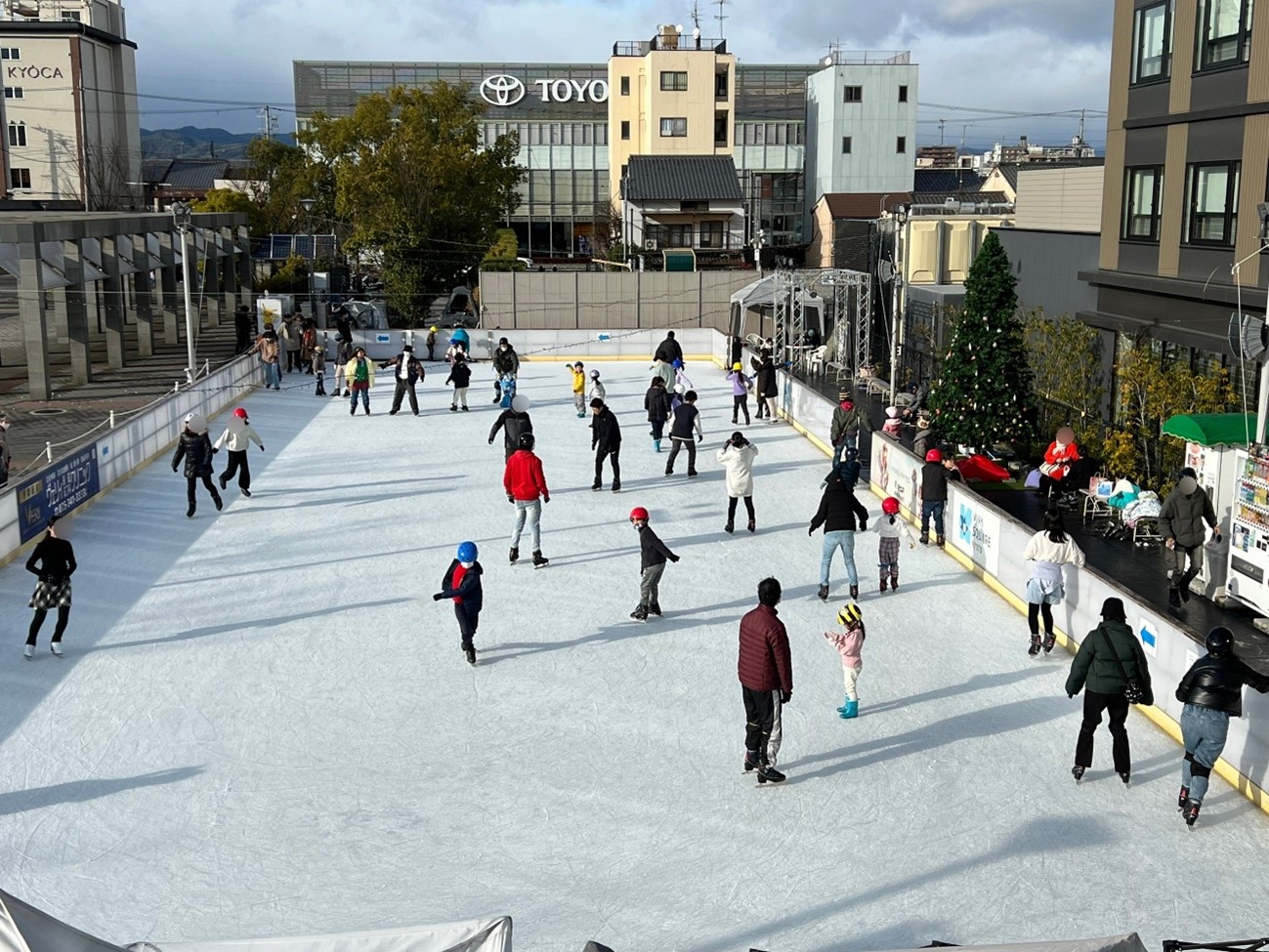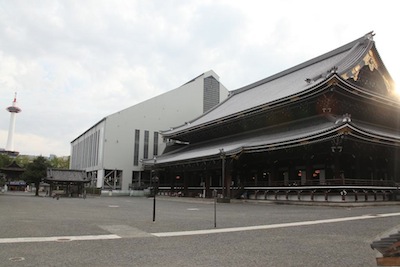
The Higashi Honganji complex is the head temple of the Otani-ha branch of the Jodo Shinshu, ShinBuddhism, which is popularly known as Ohigashi-san. This was built on donated land, which the 12th abbot, Kyonyo, received from Tokugawa Ieyasu, the first shogun of the Edo period (1603-1868). While the Founder’s Gate (Goei-do-mon) is one of the three largest in Kyoto, the Founder’s Hall (Goei-do-mon) is one of the world’s largest wooden structures, containing 927 tatami mats and the wooden image of Shinran Shonin, the founder of this denomination. Amida Hall (Amida-do), which is located next to it, is where Amida Buddha is enshrined. Both of these present Halls were rebuilt in 1895. Hair ropes, made from human hair mixed with hemp and used in that construction, were donated by parishioners from all over the country. One of these can be seen in Amida Hall. The renovation of the Founder’s Hall (Goei-do-mon) was completed in 2009. And then、the repair work of Amida Hall was conducted from February 2012 to December 2015.
Shosei-en Garden is the detached garden of Higashi Honganji and was designated as a place of National Scenic Beauty in 1936. It is also called Kikoku-tei (the Trifoliate Orange Villa) as the site was originally surrounded by this particular variety of orange trees. This garden is said to have been built on the Heian-period (794-1185) site of the Rokujo Kawara-no-in Villa of Prince Minamoto no Toru, the son of Emperor Saga. In 1641, the 13th abbot, Sennyo, requested Ishikawa Jozan to create a garden on this land, which had been donated by the 3rd shogun, Tokugawa Iemitsu. However, the various structures there were destroyed twice by fire in 1858 and 1864 and the present construction took place during the Meiji period (1868-1912). This garden is filled with many kinds of flowers throughout the year, and the colorful scenery is highly appreciated.
Basic Information
- Address : Karasuma Shichijo-agaru, Shimogyo-ku, Kyoto City, 600-8505
- Website : Click here

